9-2. The E text seems to continue with '6
sleeping mats' beyond the Fortunate One in the Tail of the Goat
(*328) in order to reach a pair of kings, one of them at the time when the
Sun reached JUNE 17 (168, *88) and the other ideally visible at
the Full Moon in the corresponding nakshatra night (*88 + *182 =
*270 → 80 + 270 = 350 = 168 + 182 → DECEMBER 16).
Due to the precession the Sun dates
had advanced with 64 days since then, which means JUNE 17 (168,
*88) had changed into 168 + 64 = 232, *152 (August 20) and
DECEMBER 16 (350, *270) to 350 + 64 = 414 (→ Bharani),
*334 = 365 + 49 (February 18), i.e. 80 - 49 = 31 days before
the Gregorian equinox in March 21 (80, *365).
|
Aug 13 (225) |
14 (45 + 181 = 41 + 185) |
 |
 |
|
Ea8-17
(260 + zero + 12
→ 273 = 3 * 91) |
Ea8-18
(274 → 364 - 90) |
|
ku haga koe |
ki te manu - te hau tea |
|
REVERSED NAKSHATRA → CLOSE TO THE
FULL MOON: |
|
CASTRA = ε Capricorni
(327.2),
BUNDA
= ξ Aquarii
(327.5)
SIRIUS (α Canis Majoris) |
Mahar sha
hi-na Shahū-26 (Western One in the
Tail of the Goat)
NASHIRA
(Fortunate One) =
γ
Capricorni
(328.0),
ν
Oct. (328.3),
AZELFAFAGE (Tail of the Hen) =
π¹
Cygni,
κ
Capricorni (328.7) |
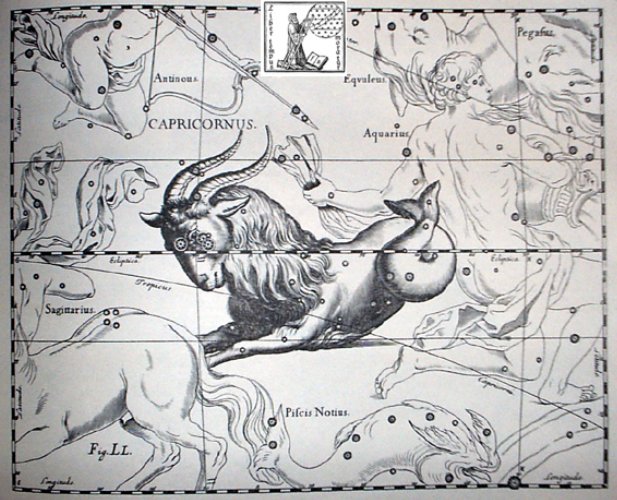 |
|
INVISIBLY CLOSE TO THE SUN: |
|
Creation of our present world
UKDAH (Knot) =
ι
Hydrae (145.4),
κ
Hydrae (145.5),
SUBRA =
ο
Leonis
(145.8)
ALPHEKKA MERIDIANA
*104.0 = *145.4 - *41.4 |
5 Imix 9
Kumk'u
Rishu A.-13
(Head of the Lion)
ψ Leonis (146.4),
RAS ELASET AUSTRALIS = ε Leonis
(146.6)
*105.0 = *146.4 - *41.4 |
|
... Midsummer is the flowering
season of the oak, which is the tree
of endurance and triumph, and like
the ash is said to 'court the
lightning flash'. Its roots are
believed to extend as deep
underground as its branches rise in
the air - Virgil mentions this -
which makes it emblematic of a god
whose law runs both in Heaven and in
the Underworld ... The month, which
takes its name from Juppiter the
oak-god, begins on June 10th
[161 + 16
= 177 = 354 / 2 = 6 * 29] and
ends of July 7th. Midway comes St.
John's Day, June 24th
[177 + 14
= 191], the day on which the
oak-king was sacrificially burned
alive. The Celtic year was divided
into two halves with the second half
beginning in July, apparently after
a seven-day wake, or funeral feast,
in the oak-king's honour ... |
|
JUNE 10 (225 - 64 = 161) |
11 (162 → 146
+ 16) |
|
"July 3 (225 - 41 = 184) |
4 (185 → 146 +
39) |
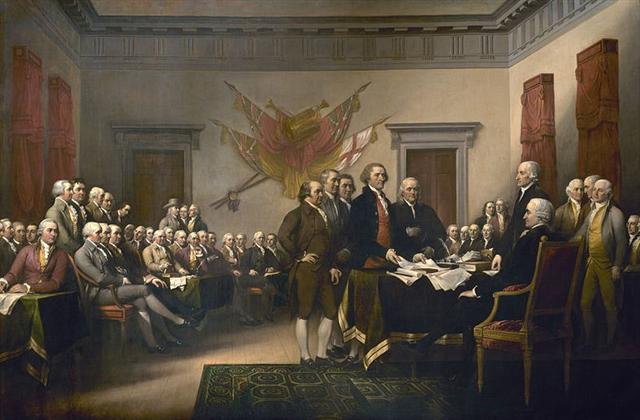 |
|
Aug 15 |
16 (276 -
48) |
17 (229) |
18 |
19 |
20 |
 |
 |
 |
 |
 |
 |
|
Ea8-19
(261 + 14) |
Ea8-20 |
Ea8-21 |
Ea8-22 |
Ea8-23 |
Ea8-24
(280) |
|
tagata tu |
ku hanau hia |
e vaha te rona moe o ruga |
kua haga koe i te ragi |
te hoko huki - kiore |
te hokohuki - kiore |
|
Vaha.
Hollow; opening; space between the
fingers (vaha rima); door cracks (vaha
papare). Vahavaha, to fight, to
wrangle, to argue with abusive words.
Vanaga. 1. Space, before T; vaha takitua,
perineum. PS Mgv.: vaha, a space, an
open place. Mq.: vaha, separated, not
joined. Ta.: vaha, an opening. Sa.:
vasa, space, interval. To.: vaha,
vahaa, id. Fu.: vasa, vāsaà,
id. Niuē: vahā.
2. Muscle, tendon; vahavaha,
id. Vahahora
(vaha
1 - hora
2), spring. Vahatoga
(vaha
1 - toga
1), autumn. 3. Ta.: vahavaha,
to disdain, to dislike. Ha.:
wahawaha,
to hate, to dislike. Churchill.
Rona.
Figure made of wood, or stone, or
painted, representing a bird, a birdman, a
lizard, etc. Vanaga. Drawing, traction.
Pau.: ronarona, to pull one another
about. Churchill. While the rongorongo signs
(rona) are generally 'carved out,
incised' (motu), ta implies an
incision ('cutting, beating') as well as the
process of applying signs to the surface
with the aid of a dye ... RAP. rona
means primarily 'sign' (an individual sign
in the Rongorongo script or a painted or
carved sign made on a firm background, such
as a petroglyph), but also 'sculpture' (made
from wood or stone, representing animals of
hybrid creatures) ... rona (lona)
implies the idea of 'maintaining a straight
line' with ropes and nets and also the
maintaining of a steady course (in MAO. and
TUA.). Te Rona is the name of a star
in TUA., which Makemson (1941:251) derives
from the mythical figure of 'Rona',
who is connected with the moon and is
considered to be the father of (the moon
goddess) Hina (for this role in MAO.,
see Tregear 1891:423). From west Polynesia
come totally different meanings. Interesting
perhaps is FIJ. lona, 'to wonder what
one is to eat, fasting for the dead.' ...
Barthel 2.
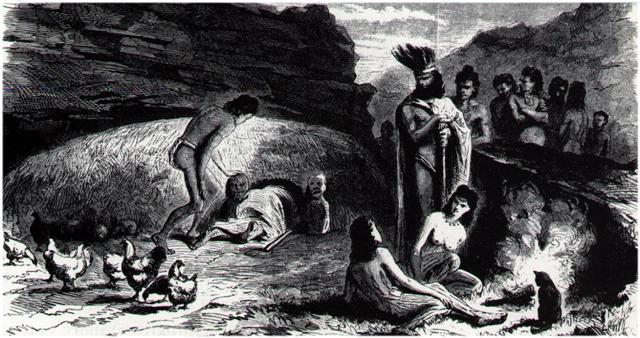 |
|
REVERSED NAKSHATRA → CLOSE TO THE
FULL MOON: |
|
Febr
13 |
All
Hearts' Day |
15
(411, 46) |
16 |
17 |
18 (414, 49) |
|
Arkat sha hi-na
Shahū-27 (Eastern One in the Tail of the
Goat)
ENIF (The Nose) =
ε
Pegasi, ERAKIS =
μ
Cephei
(329.2),
46 CAPRICORNI, JIH (the Sun) =
κ
Pegasi
(329.3),
ι
Piscis Austrini (329.4),
λ
Capricorni (329.6),
ν
Cephei (329.7),
DENEB ALGIEDI
=
δ
Capricorni
(329.8)
*288.0 = *329.4 - *41.4 |
θ
Piscis Austrini (330.1),
λ
Oct.
(330.7) |
KUH (Weeping)
=
μ
Capricorni (331.4),
γ
Gruis (331.5)
*290.0 = *331.4 - *41.4 |
No star listed (332) |
η Piscis Austrini (333.4)
*292.0 = *333.4 - *41.4 |
Rooftop-12 (Swallow)
22h (334.8)
KAE UH (Roof) = ο Aquarii
(334.0),
AL KURHAH (White Spot) = ξ Cephei
(334.4),
SADALMELIK
(Lucky King)
= α Aquarii,
AL DHANAB (The Tail) = λ Gruis
(334.6), ι Aquarii, ν Pegasi (334.7)
*293.0 = *334.4 - *41.4 |
 |
|
INVISIBLY CLOSE TO THE SUN: |
|
"July 5 (147 + 39) |
6 (*107) |
7 (229 - 41 = 188) |
8 |
9 |
10 (191, *111) |
|
JUNE 12 (227 - 64) |
13 (148 + 16) |
14 (165 = 188 - 23) |
15 |
16 |
17 (168, *88) |
|
VATHORZ PRIOR = υ Carinae
(147.9) |
υ¹
Hydrae (148.4),
RAS ELASET BOREALIS (Northern Head of the
Lion) =
μ
Leonis
(148.7)
*107.0 = *148.4 - *41.4 |
TSEEN KE (Heaven's Record) =
φ
Velorum
(149.9) |
ν Leonis (150.1), π Leonis (150.6) |
υ² Hydrae (151.8) |
Al Jabhah-8
(Forehead)
/
Maghā-10
(Bountiful)
/
Sharru-14 (King)
10h (152.2)
AL JABHAH =
η
Leonis (152.4),
REGULUS
(Little KIng) =
α
Leonis
(152.7)
*111.0 = *152.4 - *41.4 |

.jpg) |
Maybe also the 5 knots at the edge on the bottom side of the Phaistos disc
could refer to 5 'days of sleeping mats'.
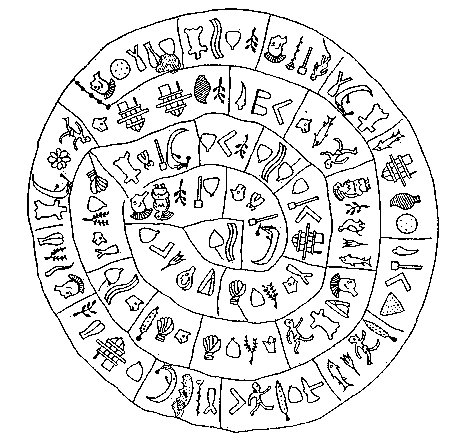
... Nut, whom the Greeks
sometimes identified with Rhea, was goddess
of the sky, but it was debatable if in
historical times she was the object of a
genuine cult. She was Geb's twin sister and,
it was said, married him secretly and
against the will of Ra. Angered, Ra had the
couple brutally separated by Shu and
afterwards decreed that Nut could not bear a
child in any given month of any year. Thoth,
Plutarch tells us, happily had pity on her.
Playing draughts with the Moon, he won in
the course of several games a seventy-second
part of the Moon's light with which he
composed five new days. As these five
intercalated days did not belong to the
official Egyptian calendar of three hundred
and sixty days, Nut was thus able to give
birth successively to five children: Osiris,
Haroeris (Horus), Set, Isis and Nepthys
...
If so, then its number of glyphs (118) in a way ought to be
increased to 123, i.e. to the same number of day signs as
on the top side of the disc. The 4 knots on the top side
are in contrast not drawn very distinct, possibly
instead referring to the 4 corners of the
'earth'.
...
Among the multitude of
gods worshipped by these people [the Maya]
were four whom they called by the name
Bacab. These were, they say, four
brothers placed by God when he created the
world at its four corners to sustain the
heavens lest they fall ...
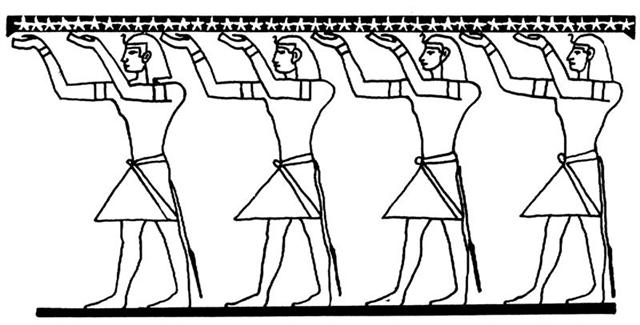

123 + 123 = 246 = 366 - 120.
Possibly, I thought, the pair of kings Regulus and Sadalmelik could have been
illustrated as a pair of palaces:
 
On the top face of the Phaistos disc there
is only one such palace, and possibly its
place (118 →
4 synodic months) could refer to the end of the
first quarter of the year, when the Sun would reach
to the
Nose
of the Lion:
|
20 |
19 |
28 |
3 |
|
1 |
10 |
6 |
2 |
9 |
28 |
26 |
26 |
|
8-petal flower |
pole |
hen |
|
prince |
scarab |
|
|
|
 |
 |
 |
 |
 |
 |
 |
 |
|
76 (*281) |
77 |
78 |
79 |
80
(*285) |
110 (*315) |
111 |
112 |
|
21 |
22 |
23 |
24 |
25 |
26 |
27 |
28 |
29 |
30 |
31 |
|
4 |
5 |
3 |
5 |
3 |
4 |
5 |
3 |
3 |
3 |
5 |
|
84 |
89 |
92 |
97 |
100 |
104 |
109 |
112 |
115 |
118 |
123 |
|
19 |
12 |
12 |
?² |
29 |
2 |
7 |
28 |
19 |
2 |
18 |
|
15 |
20 |
11 |
18 |
26³ |
19 |
15 |
26 |
16 |
15 |
4 |
|
16¹ |
16¹ |
5 |
3 |
8 |
16 |
37 |
26 |
26 |
17 |
25 |
|
4 |
2 |
|
2 |
|
8 |
2 |
|
|
|
2 |
| |
9 |
|
9 |
|
|
9 |
|
|
|
9 |
|
4 |
5 |
3 |
5 |
3 |
4 |
5 |
3 |
3 |
3 |
5 |
 |
 |
 |
 |
 |
 |
 |
 |
 |
 |
|
11 |
12 |
13 |
14 |
15 |
16 |
17 |
18 |
19 |
20 |
 |
 |
 |
 |
 |
 |
 |
 |
 |
 |
|
21 |
22 |
23 |
24 |
25 |
26 |
27 |
28 |
29 |
30 |
|
Aug 8
→ 8 * 8 = 64 |
9 |
10 (222) |
11 |
12 |
 |
 |
 |
 |
 |
|
Ea8-12 |
Ea8-13 |
Ea8-14 (270) |
Ea8-15 |
Ea8-16 (2 *
136) |
|
ko raua ku tutu i te henua |
te rima |
ku rave ia ia |
te hokohuki - kiore |
te hokohuki - kiore |
|
Tutu,
1. Circle of fishing nets arranged
in the shape of a funnels or
baskets. 2. To light a fire;
he-tutu i te ahi: to burn
something. 3. To hit, to strike, to
beat. Tûtú, to shake
(something) clean of dust or dirt;
he-tûtú te oone o te nua, to
shake the dirt off a nua
cape. Tutuhi, to reject the
responsibility for a mistake onto
one another, to blame one another
for a mistake (see tuhi).
Tutuki, to stumble, to trip.
O tutuki te va'e, in order not
to trip. Tutuma, firebrand,
partly burnt stick. Tuturi,
to kneel. Vanaga. 1. To beat bark
for cloth.
PS Pau., Mgv., Mq., Ta.: tutu,
id. Sa., To., Fu.: tutu, id.
2.
A broom, to sweep, to clean. Mq.:
tutu, to beat out the dust. 3.
To shake, to winnow. Mgv.: tutu,
to tremble, to leap. Mq.: tutu,
to shake. 4. To kindle, to light, to
ignite, to set fire, to burn. Mq.:
tutu, to burn, to set fire.
5. To stand; hakatutu, to set
joists. P Mgv., Mq.: tutu, to
stand upright. Ta.: tu, id.
Tutua (tutu 1): board
on which bark is beaten into cloth.
PS Mgv.: tutua, a cloth
beater. Mq., Ta.: tutua, wood
on which cloth is beaten. Sa., Fu.:
tutua, id. Tutui:
tutui ohio, chain, tutui kura,
shawl. Mq.: tuitui kioé,
chain. Tutuki: shock,
contusion, to run against, to
collide; tukukia, to run foul
of. P Pau.: tukituki, to
strike, to pound, to grind. Mgv.:
tukia, to strike against, shock,
concussion. Mq.: tutuki, id.
Ta.: tui, id. Tutuma:
1. (tutu - ma) a live
coal. 2. Tree trunk T (? tumu).
Tutumata, ligament of the
eye, orbit, eyelid.
T (tutumate, eyelid G).
Tutuu, bristling. Churchill.
Rave. Ta.: Rave,
to take. Sa.: lavea, to be
removed, of a disease. To.: lavea,
to bite, to take the hook, as a
fish. Fu.: lave, to
comprehend, to seize. Niuē:
laveaki,
to convey. Rar.: rave,
to take, to receive. Mgv:
rave,
to take, to take hold;
raveika,
fisherman. Ma.: rawe,
to take up, to snatch. Ha.:
lawe,
to take and carry in the hand. Mq.:
ave,
an expression used when the fishing
line is caught in the stones.
Churchill 2.
Kiakia.
Dove, gull T.
Mgv.: kiakia, the cry of the
kotake (a white marine bird.)
Churchill.

... in the
ceremonial course of the coming
year, the king is symbolically
transposed toward the Lono
pole of Hawaiian divinity ... It
need only be noticed that the
renewal of kingship at the climax of
the Makahiki coincides with
the rebirth of nature. For in the
ideal ritual calendar, the kali'i
battle follows the autumnal
appearance of the Pleiades, by
thirty-three days - thus precisely,
in the late eighteenth century, 21
December, the winter solstice. The
king returns to power with the sun.
Whereas, over the next two days,
Lono plays the part of the
sacrifice. The Makahiki
effigy is dismantled and hidden away
in a rite watched over by the king's
'living god', Kahoali'i or
'The-Companion-of-the-King', the one
who is also known as 'Death-is-Near'
(Koke-na-make). Close kinsman
of the king as his ceremonial
double, Kahoali'i swallows
the eye of the victim in ceremonies
of human sacrifice ... In the deep
night before the image [of Lono]
is first seen, there is a
Makahiki ceremony called
'splashing-water' (hi'uwai). Kepelino
tells of sacred chiefs being carried
to the water where the people in
their finery are bathing; in the
excitement created by the beauty of
their attire, 'one person was
attracted to another, and the
result', says this convert to
Catholicism, 'was by no means good'.
At dawn, when the people emerged
from their amorous sport, there
standing on the beach was the image
of Lono. White tapa
cloth and skins of the ka'upu
bird hang from the horizontal bar of
the tall crosspiece image. The
ka'upu is almost certainly the
albatross, a migratory bird that
appears in the western Hawaiian
chain - the white Lanyon albatross
at Ni'ihau Island - to breed
and lay eggs in October-November, or
the beginning of the Makahiki
season
... |
|
REVERSED NAKSHATRA → CLOSE TO THE
FULL MOON: |
|
KITALPHA (Part of a Horse) =
α
Equulei
(322.0),
ALDERAMIN (The Right Arm) =
α
Cephei
(322.9) |
DAI =
ι
Capricorni
(323.5),
β
Equulei (323.8) |
γ
Pavonis (324.1),
YAN =
ζ
Capricorni
(324.6) |
Al Sa'd al Su'ud-22 (Luckiest of the
Lucky)
/
Emptiness-11 (Rat)
TSIN = 36 Capricorni
(325.2),
ALPHIRK (The Flock) =
β
Cephei
(325.7),
SADALSUD =
β
Aquarii,
ξ
Gruis (325.9) |
No star listed (326) |
|
... Early on Sunday morning, 14
February 1779, Captain Cook went
ashore with a party of marines to
take the Hawaiian king, Kalaniopu'u,
hostage against the return of the
Discovery's cutter, stolen the night
before in a bold maneuver - of
which, however, the amiable old
ruler was innocent. At the decisive
moment, Cook and Kalaniopu'u, the
God and the King, will confront each
other as cosmic adversaries. Permit
me thus an anthropological reading
of the historical texts. For in all
the confused Tolstoian narratives of
the affray - among which the
judicious Beaglehole refuses to
choose - the one recurrent certainty
is a dramatic structure with the
properties of a ritual
transformation. During the passage
inland to find the king, thence
seaward with his royal hostage, Cook
is metamorphosed from a being of
veneration to an object of
hostility. When he came ashore, the
common people as usual dispersed
before him and prostrated face to
earth; but in the end he was himself
precipitated face down in the water
by a chief's weapon, an iron trade
dagger, to be rushed upon by a mob
exulting over him, and seeming to
add to their own honors by the part
they could claim in his death:
'snatching the daggers from each
other', reads Mr. Burney's account,
'out of eagerness to have their
share in killing him'. In the final
ritual inversion, Cook's body would
be offered in sacrifice by the
Hawaiian King ...

... After the assassination of
Captain Cook they were able to
retrieve his dead body - with the
exception of his head and his hands.
This probably meant
not only the Head
but also Hands were necessary for
re-creation
...
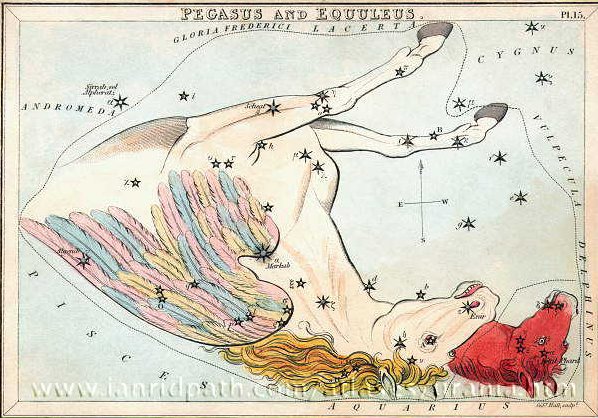
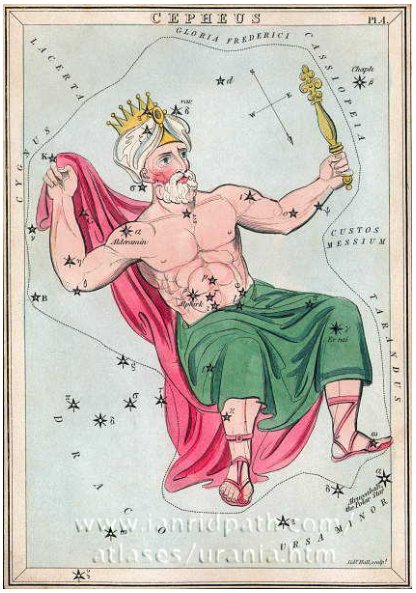
... The Hawaiian woman who was
interviewed chuckled because the
assassination of Captain Cook
coincided with the day we have named
All Hearts' Day - when in
February 14 (2-14) the war-god
Kuu returned to power ... |
|
INVISIBLY CLOSE TO THE SUN: |
|
No star listed (140) |
θ
Pyxidis (141.5),
MARKAB VELORUM =
κ
Velorum
(141.5),
AL MINHAR AL ASAD (The Nose of the
Lion)
=
κ
Leonis
(141.6),
λ
Pyxidis (141.9) |
Star-25
(Horse) /
ANA-HEU-HEU-PO-5 (Pillar where
debates were held)
ALPHARD (The Horse) =
α
Hydrae
(142.3),
ω
Leonis (142.6),
τ¹
Hydrae (142.7) |
Al Tarf-7 (The
End)
ψ
Velorum (143.3),
ALTERF =
λ
Leonis,
τ²
Hydrae (143.4),
ξ
Leonis (143.5)
*102.0 = *143.4 - *41.4 |
A Hydrae
(144.1)
VEGA (α Lyrae) |
The star named the Nose of
the Lion (κ) was indeed
located at the beginning of Leo,
yet his End (λ)
came quickly thereafter,
suggesting the Leo constellation
could illustrate how the Lion here
became
'vaporized' in the heat of high
summer - became transported up into the
sky (Cat-asterized).

... 'Who
are you talking to?' said
the King, coming up to Alice,
and looking at the Cat's head
with great curiosity. 'It's a
friend of mine - a
Cheshire-Cat,' said Alice:
'allow me to introduce it.'
'I don't like
the look of it at all,' said the
King: 'however, it may kiss my
hand, if it likes.' 'I'd rather
not,' the Cat remarked. 'Don't
be impertinent,' said the King,
'and don't look at me like
that!' He got behind Alice as he
spoke. 'A cat may look at a
king,' said Alice. 'I've read
that in some book, but I don't
remember where.' 'Well, it must
be removed,' said the King very
decidedly: and he called to the
Queen, who was passing at the
moment, 'My dear! I wish you
would have this cat removed!'
The Queen had only one way of
settling all difficulties, great
or small. 'Off with his head!'
she said without even looking
around ...

|












.jpg)













